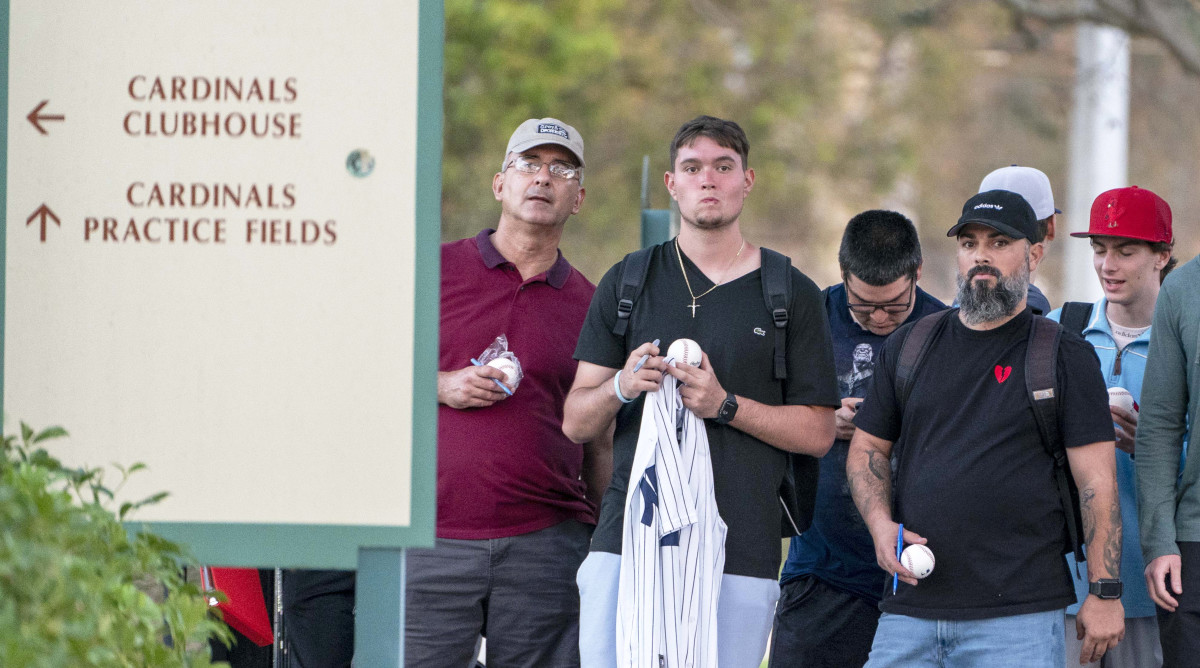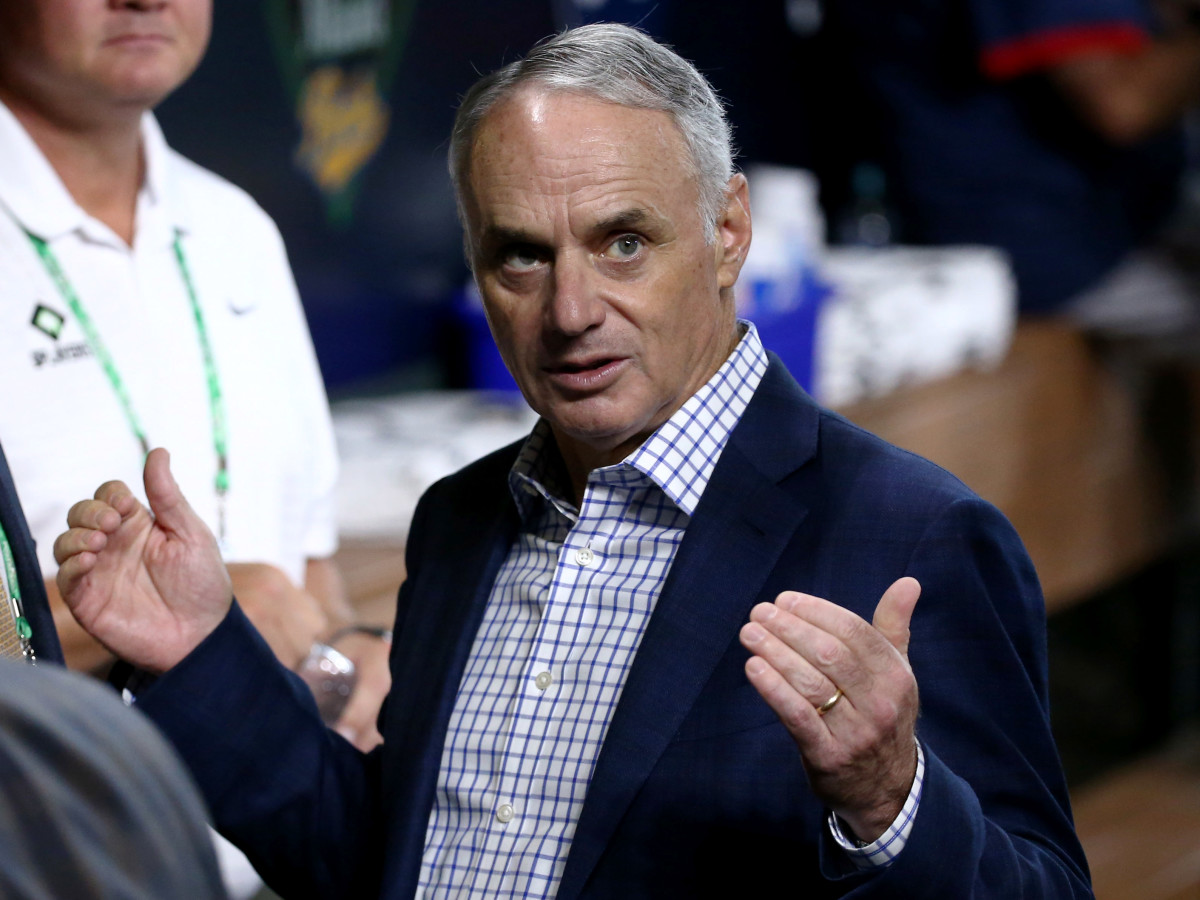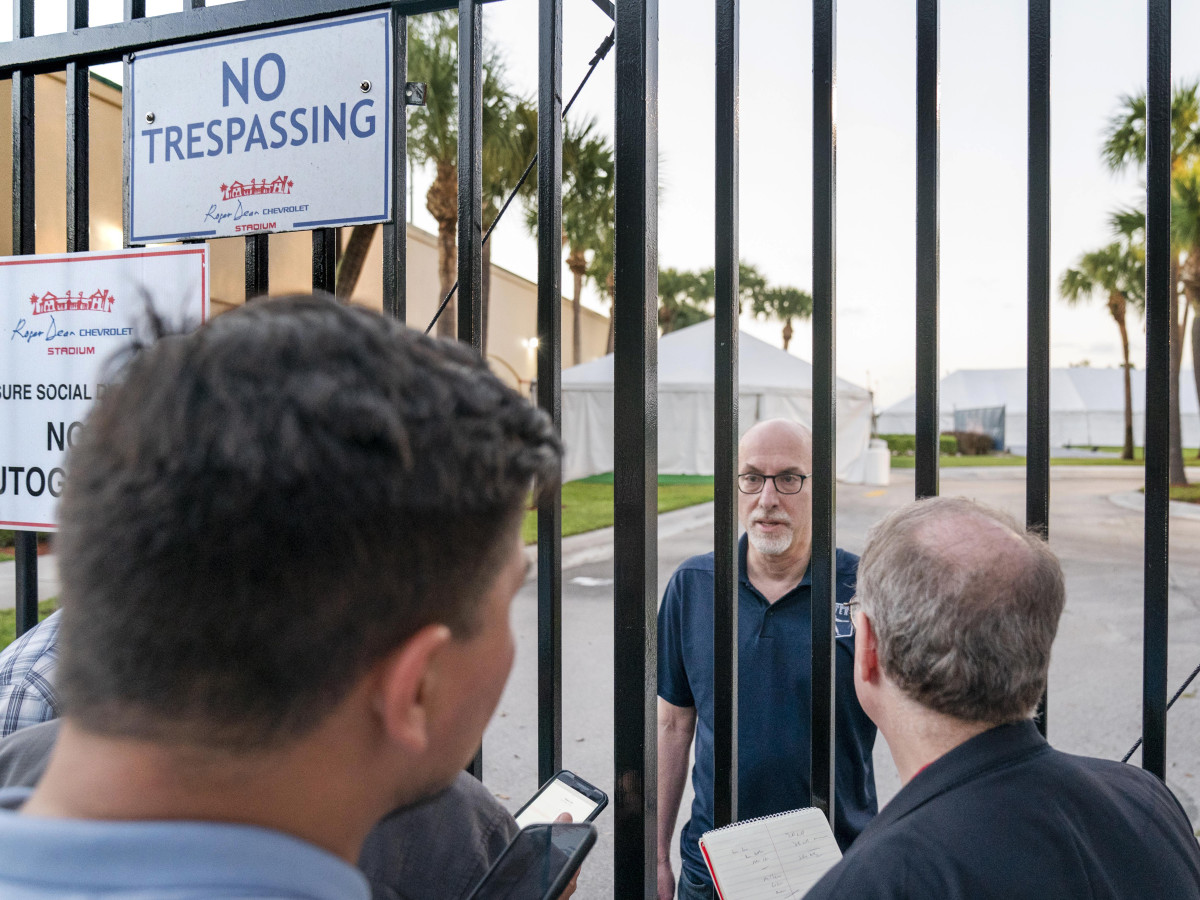This Is MLB’s Most Important Weekend in Two Decades
Baseball players wanted to roll back arbitration eligibility to two years. Owners told them any change to arbitration was a nonstarter. A lockout ensued.
People grew angry about no spring training. Without the American Pastime, they occupied themselves by going to see Driving Miss Daisy, listening to Bonnie Raitt and Milli Vanilli at the peak of cassette sales and talking about Joe Montana, fresh off his third Super Bowl win, as the greatest quarterback in NFL history.
The year was 1990. The Super Bowl rating (39) was the lowest since ’69, barely beating Game 7 of the ’86 World Series (38.9). The halftime show featured a clarinetist and a fiddle player. It would be years before most people realized that something called a browser launched that year. It was called WorldWideWeb.
It was a lockout from another world. Times, if not the issues, have changed.
The 1990 lockout, like the two that preceded it, was settled without missing a regular-season game. This one, the first since then, is more ominous because there are more issues of disagreement and because baseball has lost ground in a fast-changing, ever-expanding entertainment landscape.

Voluntarily removing your product from the shelf is bad enough. The void being met with apathy instead of anger is worse.
This is the most important weekend in the business of baseball since the last weekend of August 2002. Back then owners and players faced a Tuesday deadline before the players were going on strike—after one in 1994 wiped out the World Series and part of the ’95 season. Round-the-clock negotiations brought an agreement with only hours to spare, just as a marathon 17-hour session ended the ’90 lockout just in time to save a full if belated season.
It will take a similar deus ex machina to save this season from being cleaved.
This time the two sides face a Monday deadline before games start coming off the regular-season schedule, at least according to the owners. The players don’t believe in the firmness of the deadline—just one more disagreement heaped on the three-year pile of disagreements that brought us to this weekend.
Every collective bargaining agreement in baseball is difficult. This one, which ended 26 years of labor peace, has been especially difficult because of the king’s buffet of issues and the disparate motivations for change. Owners want moderate changes more typical to a CBA. Players, after agreeing to underwhelming economic changes in the last CBA, dispensed the typical small-ball style of negotiations and are swinging for the fences to make up a big deficit. Pay to players last year dropped to its lowest level since 2015, while revenues increased 13% from ’16, when the last CBA was signed, to ’19, the last pre-COVID season.
Unlike in 2016, there are economic wins on the table for the players right now, including:
• A first-of-its-kind bonus pool for pre-arbitration players. The gap may seem wide (owners have offered $20 million, players are at $115 million) but is negotiable.
• A first-of-its-kind draft lottery to help deter tanking. (Owners have offered four teams in the draw; players want seven.)
• A first-of-its-kind mechanism to deal with service-time manipulation, through the awarding of draft picks to teams and/or service time and bonuses to players
• The removal of draft pick compensation attached to free agents.
• The DH in the National League.
• A raise in minimum salary to $640,000 that as a percentage (12.2%) more than doubles the raise in the past CBA (5.4%)—with room to grow. The players are at $775,000 (35.8%).
Sign up to get the Five-Tool Newsletter in your inbox every week during the MLB offseason.
The problem for the players is that these wins don’t go far enough—not when cast against how the past CBA worked against them and how franchise values have soared. That is another disagreement: owners see thin margins of operational costs while players see increasing franchise value.
David Glass bought the Royals for $96 million in 2000. He sold them 19 years later for $1 billion. The Royals. The team that plays in the third smallest MLB market.
When this is over, the two sides will face a bigger fight: the one to fix the product on the field. They already have forfeited the post-Super Bowl, feel-good moment of baseball coming back to life, like the rest of us, after a long, cold winter—corny, sure, but the seasonal romance of the game matters to many people, especially the small businesses in Florida and Arizona losing a third straight full spring training. Now endangered are Opening Day, the 75th anniversary of Jackie Robinson’s historic debut and what used to be known as the sanctity of the 162-game season.
It is difficult to find the urgency of a deadline. Both sides spent this week mired in the pettiness of trying to “out-incremental” the other. The players increased their ask for a minimum salary in the second year of the term by one-sixth of one percent. MLB dropped the idea of cutting minor league roster sizes.
Meanwhile, the largest obstacles remain virtually untouched: the competitive balance tax and—yes, again—arbitration eligibility. It will take an extraordinary turn of events to solve just those two issues in one weekend—while also tending to the rest of the buffet items with actual negotiating instead of increments du jour. History tells us such a turnaround is possible, usually prompted by one of those “big breakthroughs” commissioner Rob Manfred mentioned two weeks ago. Here is a look at the big-ticket items that need to be addressed this weekend:

Competitive Balance Tax
First, understand the history. Owners wanted a salary cap in 1994, which led to the strike. When they finally dropped the cap idea in February of ’95, their fallback position was a “luxury tax,” as it was called then, which would act as a braking mechanism against runaway payrolls of the large-revenue teams. They asked for a 75% tax on $35 million payrolls as the first threshold of the tax. Twenty-one months later, they agreed with the players on 35% on $51 million.
Each subsequent CBA has brought tweaks to the tax rates and thresholds of the rebranded “CBT.” It often is the last item of an agreement, as it was in 2016. The first threshold increased only 3.2% in ’16, which angered some agents that it didn’t go far enough. They feared the big spenders would use the CBT as a soft cap. In the four full seasons of the CBA, only 11 of 120 payrolls exceeded the first threshold.
The CBT is designed to help competitive balance. In that regard, it is working. No team has repeated as champions for 21 seasons, the longest streak in the World Series era. Four of the eight winningest teams over the past CBA—Tampa Bay, Cleveland, Milwaukee and Oakland—never carried a payroll in the top half of teams in any of those five seasons, though none of those four teams have won the World Series.
The CBT is the owners’ most important curb on salaries and thus the players’ most important strategic target, a reality made obvious by the gap in their threshold positions ($31 million apart in Year 1, $51 million apart in Year 5) and the lack of movement. Only the owners have amended their position since the lockout began, and when they did, they gave a small back-end bump while increasing the tax rates. Players began with a $248 million threshold last May and moved in November to $245 million, where they have remained.
There is always room to negotiate on CBT because it has two levers to tweak: rate and threshold. For instance, when the 2002 strike was averted, the owners asked for 50% on $98 million and settled at 17.5% on $117 million.
This time around, there is another complication besides the math. Owners are working off the past CBA. Their proposal would bump the first threshold from $210 million last year to $214 million this year, a 1.9% increase that likely allows room to match the 3.2% increase in the last CBA.
The players are not working off $210 million. They say the past CBA doesn’t apply. They argue that Article 23 of the past CBA is a sunset clause that specifies the CBT does not survive the expiration of the agreement. If, for instance, the owners wanted to lift the lockout and play under the expired CBA, they argue the CBT would no longer apply. They are asking for a $245 million threshold not as framed against the past CBA, but against revenue growth and their belief that a rising tide lifts all boats.
“The CBT is preventing growth,” one player source said. “In baseball, you always want your Goliaths.”

Arbitration Eligibility
Here again, history is instructive. Arbitration eligibility has been an irritant in negotiations ever since the players agreed in 1985 to raise it from two to three years of service.
See if this sounds familiar: the lockout of 1990 occurred because the players wanted to roll back arbitration eligibility to two years and the owners said any change was a nonstarter. The players then lowered their request to 50% of players in the two-to-three-year class, the so-called Super Twos. Owners responded with a proposal for a bonus pool of $4 million. Players countered by dropping their request to 25% as part of a sliding scale that would max out at 40%.
Within hours of that same night, owners countered with the “one big breakthrough:” 10% of Super Twos. They moved off a position that for months they said was unmovable. An agreement was reached in less than 24 hours.
Players countered at 20%. Owners offered 12%. They settled at 17%.
The 1990 lockout lasted 32 days. It wiped out a month of spring training, pushed back Opening Day a week and pushed back the World Series three days. And it was all because of an issue that affected 14 players.
It took four more CBAs and 23 years for the players to move the Super Two bar from 17% to 22%. In their most recent proposal, they want to bump it to 75%.
An optimist sees the 1990 lockout as proof agreements can come quickly. Union executive director Donald Fehr entered the office of commissioner Fay Vincent at 12:30 p.m. on March 18, a Sunday afternoon, and shook hands on a deal 17 ½ hours later. Doors flung open at camps just hours later. A hurry-up spring training lasted three weeks. Rosters expanded from 24 players to 27.
MLB insists there will be no gerrymandering this time around. No seven-inning doubleheaders to squeeze in lost games. No shifting of the calendar. And when owners picked up vibes from news accounts that players considered Monday to be a soft deadline, they doubled down. They let it be known that lost games mean lost pay, attempting to cut off a safety net for players if they planned to trade approval for the 14-team postseason for full pay in a shortened season.
Over the 85 days of this lockout, little to no movement has occurred on the biggest issues: the CBT and proposals by the players on arbitration eligibility and revenue sharing—two issues the owners have defined as non-negotiable. The next four days will provide some clarity, if not an agreement.
By Monday we will know whether the lockout is a nuisance or a crisis. Nick of Time or All or Nothing. If they are anywhere close to a deal Monday they will keep going. A day or two late won’t kill Opening Day. But if nothing changes on the big-ticket items, it is a sign that the hawks are in control, and they are willing to play a long game.
More MLB Coverage:
• Baseball’s Greatest Threat Isn’t the Lockout
• ‘Sex and the City’ and a Baseball Mystery
• Andrew Miller Explains Key Lockout Issues for MLBPA
• Juan Soto’s Way-Too-Early Free-Agency Destinations
• What Went Wrong With Christian Yelich and Cody Bellinger?
